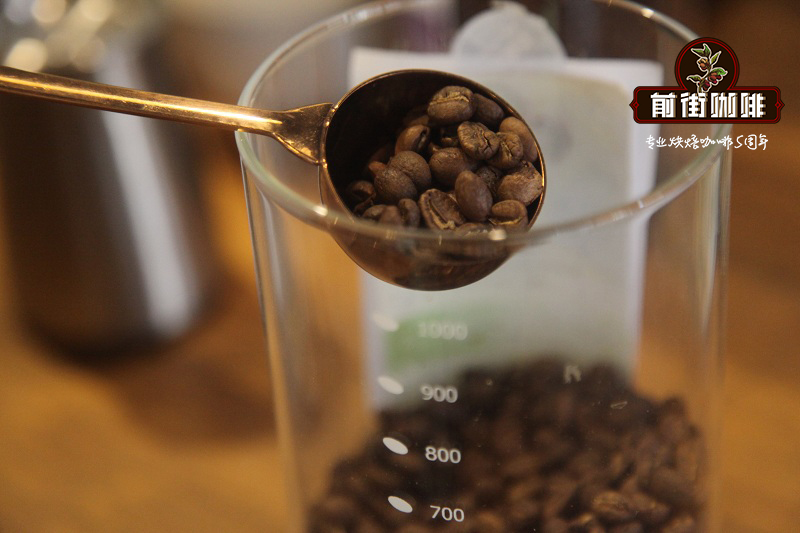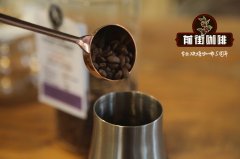Cuzco coffee growing region Cuzco coffee growing history story Flavor taste characteristics

Professional coffee knowledge exchange more coffee bean information please follow the coffee workshop (Wechat official account cafe_style)
Peru (Peru) is also a big coffee producer. Up to 98% of Peruvian coffee is grown in forest areas, and most producers are small farmers.
Peru has good economic conditions and a stable political situation, thus ensuring the good quality of coffee. However, there are many local problems, in addition to guerrilla warfare and drug trafficking, the emergence of cholera along the coast in the mid-1990s led to a further economic depression, and what is more, the annual inflation rate reached 7000%.
In the mid-1970s, Peruvian coffee production was about 900000 bags a year, and then steadily increased to about 1.3 million bags a year. Although private exporters buy coffee in remote areas through middlemen, the main market is still monopolized by the government. Then came the private Comera de Exportadores de Cafe del Peru, which is committed to improving the quality of coffee. Its primary task is to set standards and eliminate inferior products, thus creating an atmosphere of quality supremacy. This positive move heralds a bright future for the coffee industry. Since then, rising prices have encouraged farmers to actively grow coffee rather than cocoa, the region's traditional cash crop.
Peru's finest coffee is produced in Chanchmayo, Cuzco, Norte and Puno. Most Peruvian coffee is grown under natural conditions, but it is also difficult to confirm the cultivation of all coffee trees. The price of caffeine grown under natural conditions is 10% to 20% higher than that of others. In terms of poverty, farmers may not have the money to buy chemical fertilizers and pesticides, but it is really difficult to confirm all the coffee.
The quality of Peruvian coffee is comparable to that of any kind of coffee in Central or South America. The high quality coffee produced by Peru is shipped to Germany for blending and then to Japan and the United States, which also illustrates its high standard of quality.
Peru began exporting coffee in 1887 and is now the eighth largest producer and the world's largest exporter of organic coffee, with an annual volume of 2 million bags, accounting for 5 per cent of total exports. More than 1/3 of the country's coffee is grown in the Cajamarca region in the north and Aprimark and Cusco in the south. The farms are mainly run by small farmers with an average size of no more than 5 hectares. The most common varieties are bourbon, Tibica, Pash and Kaddura.
Coffee can be grown up to 2200 meters and has many unique microclimates, many of which are collected and processed and sold through cooperatives, which is the current mainstream of boutique coffee. In the past 10 years, the EL GUABO Guavu community has improved the development of small batches of coffee beans on an organic basis, and often holds competitions to reward and certify growers.
CUSCO
Cusco is located in southern Peru and in some ways coffee is a legal alternative to cocaine. Most
Coffee is grown by small farmers, not by large estates. Tourism is booming in the region, and many tourists pass through Cusco on their way to Machu Picchu.
Altitude: 1200-1900m
Harvest: March to September
Variety: bourbon, Typica,Caturra,Pache,Modo Novo,Catuai,Catimor
Qianjie coffee: Guangzhou bakery, the store is small but a variety of beans, you can find a variety of unknown beans, but also provide online store services. Https://shop104210103.taobao.com
Important Notice :
前街咖啡 FrontStreet Coffee has moved to new addredd:
FrontStreet Coffee Address: 315,Donghua East Road,GuangZhou
Tel:020 38364473
- Prev

Flavor and taste characteristics of historical stories of Puno Puno coffee varieties in Peruvian coffee producing area
Professional coffee knowledge exchange more coffee bean information please follow coffee workshop (Wechat official account cafe_style) Peruvian coffee producing area Peru Peru is mainly small farmers, each small farmer's land is less than two hectares, producing about 3000 pounds of coffee per hectare, growing organically in Peru has a long history and is quite common, mainly because of the opportunities for farmers here or
- Next

Peruvian coffee producing area Chanchamayo Zen tea Mayo coffee planting varieties Flavor taste characteristics
Professional coffee knowledge exchange More coffee bean information Please pay attention to coffee workshop (Weixin Official Accounts cafe_style) Peru is the place of ancient Inca Empire, covering an area of about 35.7 times that of Taiwan, extending the highest peak of South America, the Andes Mountains. At that time, 180 Spanish people entered the world-famous Golden City in 1533 and returned to Spain with a large amount of looted gold. 18th century
Related
- Does Rose Summer choose Blue, Green or Red? Detailed explanation of Rose Summer Coffee plots and Classification in Panamanian Jade Manor
- What is the difference between the origin, producing area, processing plant, cooperative and manor of coffee beans?
- How fine does the espresso powder fit? how to grind the espresso?
- Sca coffee roasting degree color card coffee roasting degree 8 roasting color values what do you mean?
- The practice of lattes: how to make lattes at home
- Introduction to Indonesian Fine Coffee beans-- Java Coffee producing area of Indonesian Arabica Coffee
- How much will the flavor of light and medium roasted rose summer be expressed? What baking level is rose summer suitable for?
- Introduction to the characteristics of washing, sun-drying or wet-planing coffee commonly used in Mantenin, Indonesia
- Price characteristics of Arabica Coffee Bean Starbucks introduction to Manning Coffee Bean Taste producing area Variety Manor
- What is the authentic Yega flavor? What are the flavor characteristics of the really excellent Yejasuffi coffee beans?

